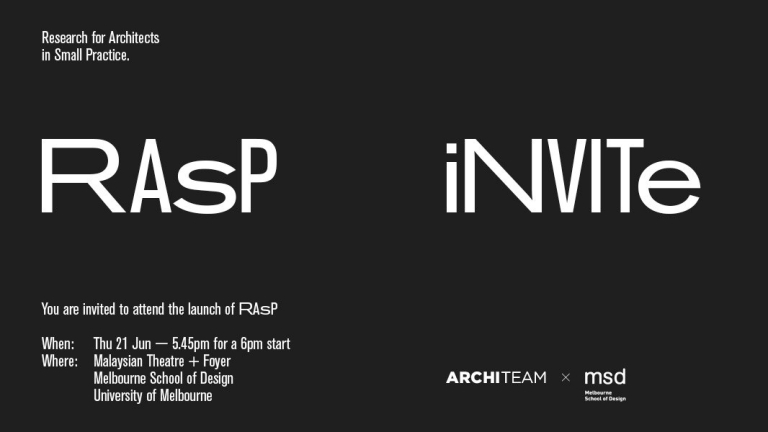So what makes a great architecture school? Or maybe a better question might be how would you design an architecture school for this day and age. I was prompted to think this because in Australia the ERA research excellence rankings have just come out. These rankings indicate that few of our Archi schools in Australia are “well” above world standard.
The rankings measure research outputs in these terms.
- 5 Well above world standard
- 4 Above world standard
- 3 At world standard
- 2 Below world standard
- 1 Well below world standard
In this ERA round, 5 Archi schools got 4 (Above world standard), 8 Archi schools got 3 (At world standard) and 1 school got 2 (Below world standard).
But on that basis I think Australian architecture schools are doing pretty well giving the universities have been ripping them off for the past 10 years or so, pumping them full of students, exploiting their full-time and sessional academics and giving next to nothing back for research or research training (sorry to sound so strident this week but its easier when I am writing in a hurry).
Yes, no one school in Australia got 5 (Well above world standard). So we all know how much I love metrics but hey WTF? ERA is kind of saying that of 22 Architecture schools in Australia none are well above world standard? Are we all “above world standard” and no higher and WTF is “world standard” for an architecture school anyway? I think all that ERA does is point to the poverty and the managerial disgrace of these kinds of metrics and ranking systems. Not to mention the time and resources spent, by academics, preparing an ERA application.
I would also argue that our ERA rankings in the discipline would be better if our architecture schools were better managed by university executives (I might even develop my own ranking survey around this). Most don’t have a clue what design studio is. Yes, let’s repeat that: most managerial types—across the different schools I know of–have no idea what a design studio is. Nor, do they really seem to care.
Its all about the research numbers or the money.
I reckon I could even do a Get Krackin style of TV comedy about design studios in architecture schools.
So my ideas for a world class plus architecture school would be:
Design Studios
Design studios are the core of any architecture school. They are highly sensitive to changes in the external environment supporting them. Such as class sizes or contact hours. You can’t learn architecture in 3 contact hours. Nor can you teach a studio with 18 students. Or spoil a studio with clueless teaching, cronyism, bias or worse still a paucity of prudent, decent and insightful design criticism, there goes your architecture school down the drain. But most managerial types—across different schools I know have no idea what a design studio is. Nor, do they really seem to care (there is that theme again).
Culture
I have written about this elsewhere. The best way to build a culture and a sense of community around an architecture school might be to have year cohort system (and an active studio system). You can’t create an architecture school culture through managerialism–sorry if this is starting to sound like a bit of theme. You won’t do it with a checklist, or a policy, nor will you do it with school prizes, nor lots of overseas studios and nor those MOFO male twerking celebrity architects coming to visit when the provincials do all the bowing and ring kissing. I have ruined my own career by never being interested in all the fawning over the celebrities. (last week we had a few visiting dignitaries, and it was like watching fawning flies on a meat carcass).

Safety Zone Debates
Yup, we need to do more than the above, and that is the mix where practitioners, academics and actual students can mix and in engage in the same milieu. Lots of panels are great, lots of questions, debates and discussions are even better. Debates and discussions about real issues. Debates where every voice is heard, and this is so important for the culture of an architecture school. Debates where it’s not just a macho title bout. We need to make safe spaces to have these conversations.
Of course, if the academics are too busy with their so-called “careers” and gaming their research metrics ( don’t get me started on this subject), then they will never engage in the culture of an architecture school. Even if some academics can’t design teach their way out of a wet paper bag, then it would be nice to see them at the debates, exhibitions and talks.
Diversity
Need I say more than merely using the D word. Or do I have to spell it out? I have written a bit about it here. If you want an excellent Architecture school the more diverse its constituents, the better. Homogeneous and monocultural schools just lead to the most appalling power asymmetries within their confines and then later on in the profession.

Curricula
I have observed three different approaches across all the Archi schools in Australia.
The diverse curriculum school — as distinct from a school with diversity– the “design” school, and the focused curriculum school (oh so boring). The diverse school can be great as it will allow different lines of design research and approaches to emerge. It might even enable synergies to happen between different domains of design knowledge. Which is all ok provide the school with the diverse curriculum is structured well. But it is not great if it is usually managed in an ad-hoc fashion, all the bits of curricular just kicking around in a rubbish bin. To be great schools, these types of schools need active, attentive and balanced leadership.
Then there are the Archi Schools focused on a single-digit idiocy, of a technical trick, brand attribute or singular focus: sustainability, materials science, fab-labbing, urban design and of course parametrics. I am not actually sure these types of archi schools are actually schools of architecture. I am sorry, but I am too much of a generalist to stomach these types of schools.

Of course, in some schools, everyone is a designer or aspires to be one. Committed to the concept and the holy idea or “process.” This tendency doesn’t really help dismantle the celebrity cult. And this sensibility always ends up sounding like the contrary argument. It’s a philosophy or approach that might have been current 20 years ago. But increasingly, design as an autonomous field to be protected, is a head-in-the-sand issue. It’s appallingly apolitical because it is a viewpoint that continually fends off anything from outside the discipline: politics, management, technology, and of course any kind of theory. With a little bit of intellectual generosity, rather than the old hokey-pokey designer smoke and mirrors, these schools can be great.
So that’s it, and I am always amazed how different schools fall into some of the various traps mentioned up. But the real point I am trying to make is that: architecture schools are a microcosm of the profession, and if we really want to change Architecture going into the future then we really need to change the schools as well. This is so important.
Bring on the revolution then we can all get fives in the ERA rankings.


















 I know many international readers of this blog will imagine me lolling about on beaches, surfing the waves, driving across the dunes, wrestling Crocs, or drinking in the pubs. Of course when I look at the Instagram and Facebook feeds of the other architectural academics I know they are all having a great time over summer. Maybe the new social media landscape is what is giving people the impression that architectural academics are slack arses who do very little when the students are not around. On Instagram my fellow academics are on beaches, in forests and far flung places like Central Java, Coolangatta, and New York City. Mostly they all seem like they are eating a lot of gelato ice cream and chugging down the French champagne. But that’s only how it looks.
I know many international readers of this blog will imagine me lolling about on beaches, surfing the waves, driving across the dunes, wrestling Crocs, or drinking in the pubs. Of course when I look at the Instagram and Facebook feeds of the other architectural academics I know they are all having a great time over summer. Maybe the new social media landscape is what is giving people the impression that architectural academics are slack arses who do very little when the students are not around. On Instagram my fellow academics are on beaches, in forests and far flung places like Central Java, Coolangatta, and New York City. Mostly they all seem like they are eating a lot of gelato ice cream and chugging down the French champagne. But that’s only how it looks.







